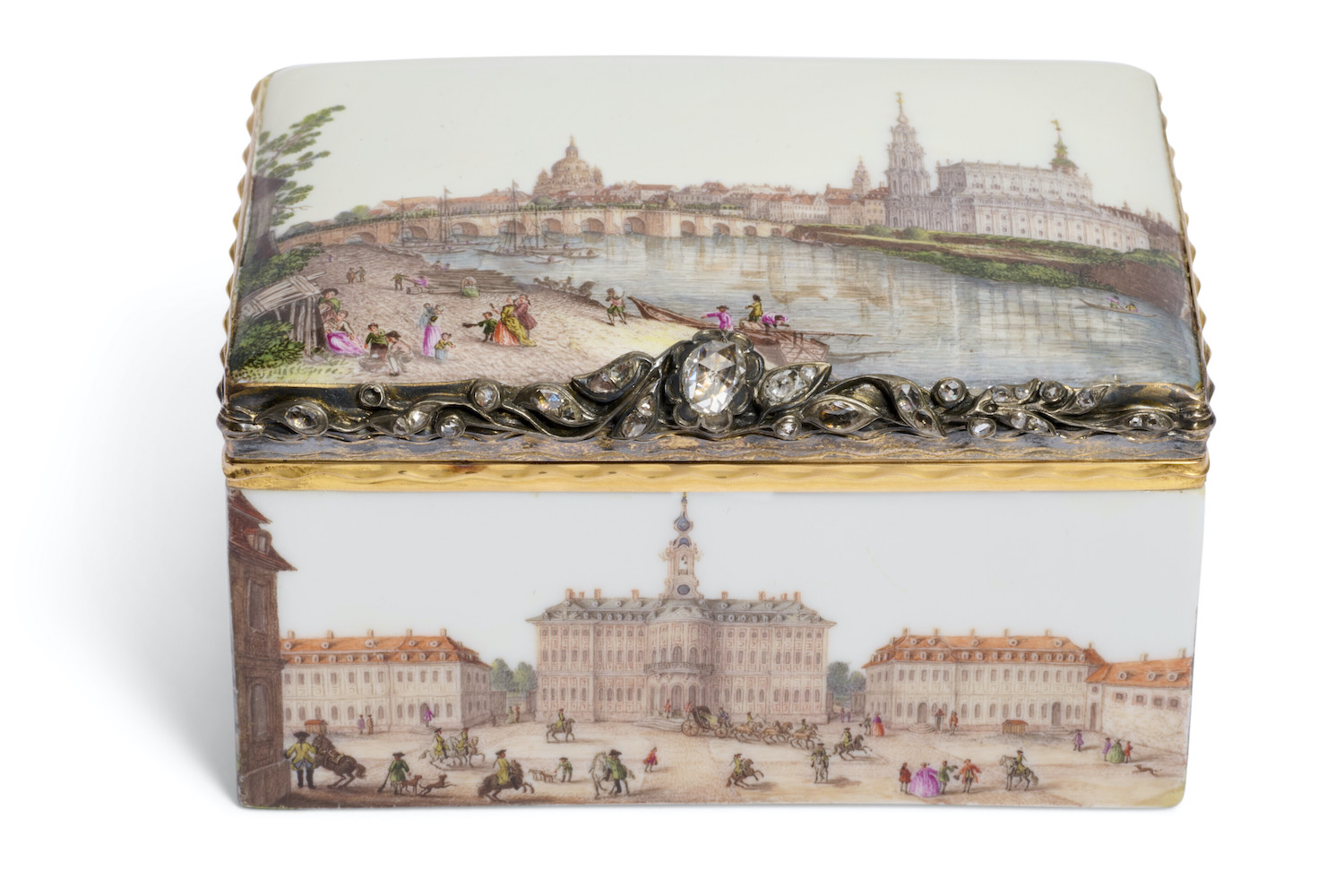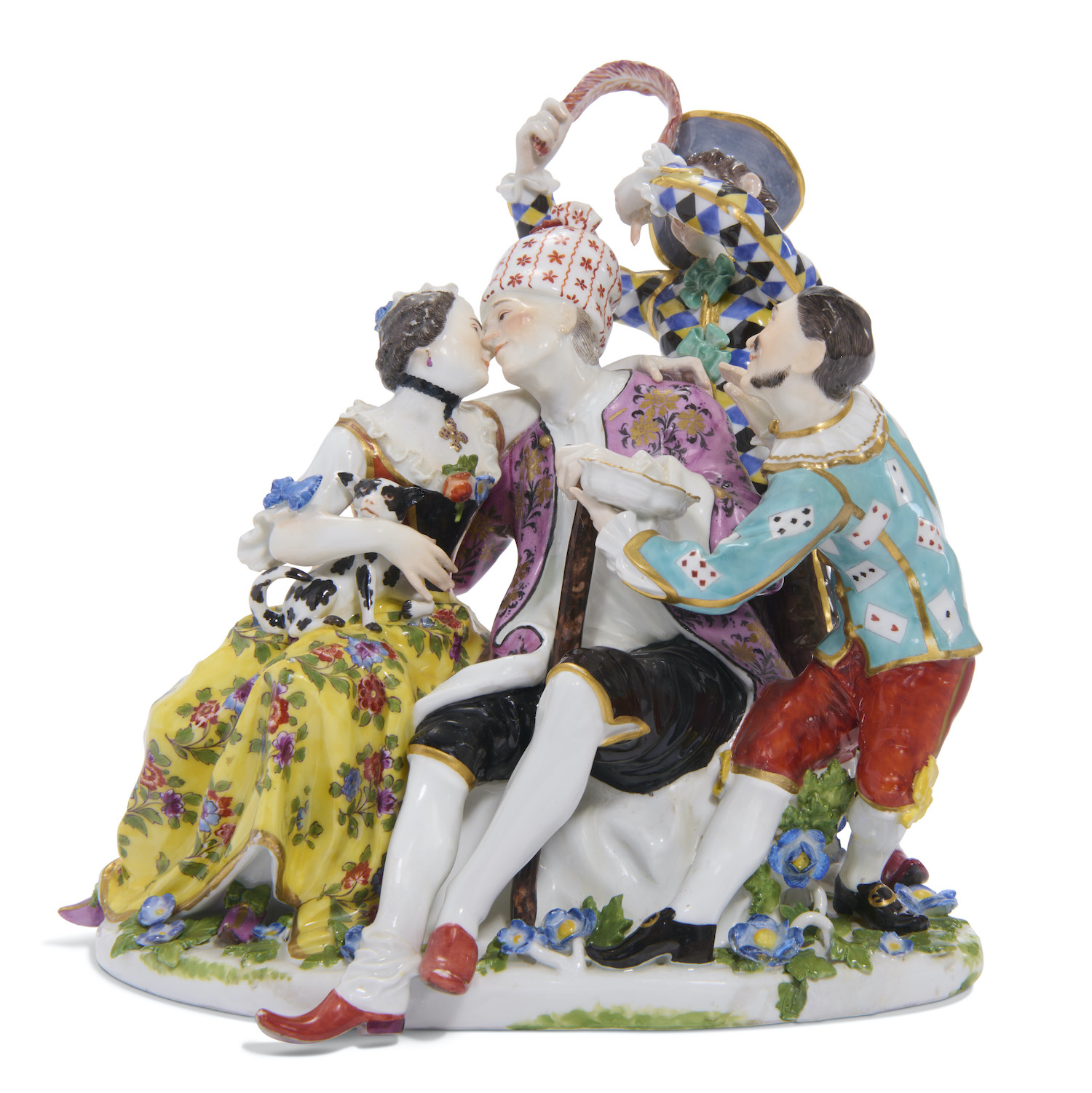#Important #Meissen #collection #Christies #Antique #Collecting
One of the most important private Meissen collections to come to the market in a generation will sell at Christie’s this month.
Compiled over 40 years from the 1960s onwards, Meissen Figures and Snuff-boxes from the Collection of Franz E. Burda (1932-2017) will be auctioned in an online sale, opening for browsing now and for bidding between September 11-25.

The collection presents over 160 porcelain lots, comprising figures and snuff-boxes, almost all manufactured at Meissen in the 18th century. The top lot is a gold, silver and diamond-mounted royal topographical snuff-box and cover which is thought to have been given to Princess Maria Josepha of Saxony (1731-1767), the Dauphine of France and Augustus III’s daughter, estimated at £350,000-500,000.
Estimates for other pieces on offer range from £800 to £500,000, providing opportunities for institutions, collectors and enthusiasts across price levels.

This sale is an important addition to Meissen collecting history, with celebrated collections offered at Christie’s over the centuries. The lots exemplify the breadth of creative expression by some of the key modellers of the period: Johan Joachim Kändler (1706-1775), Friedrich Elias Meyer (1723-1785), Johan Friedrich Eberlein (1695-1749) and Peter Reinicke (1711/15-1768).
The concept for small porcelain figures came from ornaments made out of sugar (pièces montées), which were fashionable on dining tables throughout the early 18th century in Europe and were intended to convey information about their owners: their level of scholarship, military prowess, or even their sense of humour. They could be satirical, mythological or allegorical. The Meissen figures represented in this collection include Commedia dell’Arte characters and Street Traders from three cities.

Commedia dell’Arte was a form of amusing street theatre which was performed by travelling actors and started in Rome in the 16th century. When they were banned from Louis XIV’s court, the principal actor Angelo Constantini formed another troupe and was invited by Augustus the Strong in 1719 to Saxony, where the Commedia dell’Arte tradition was popularised. As the Meissen factory was established and owned by Augustus the Strong in 1710 it is not surprising that the Commedia dell’Arte characters provided inspiration for their porcelain figures. The ‘golden period’ was between 1735 and 1750 when J.J. Kändler (1706-1775) was in his prime. His figures of these actors, with their exaggerated gestures and dramatic facial expressions, show Kändler’s mastery of the medium of porcelain and his ability to impart movement to his subjects.

Meissen created two sets of Cris de Paris figures, representing various traders in Parisian dress. The second series consisted of 34 standing figures created from the early 1750s onwards. The details of each figure (from baskets of pastries to laundry tubs and irons) represent 18th-century everyday life, which was a source of entertainment for the courts of the time. The designs for this later series were taken from drawings commissioned by the French art dealer Jean-Claude Huet (d. 1755), a merchant and dealer of Meissen porcelain in Paris.

Snuff-boxes were made in many materials in Europe during the 18th century and were a symbol of social standing, often given as diplomatic gifts. Highly personal items, they were often adorned with restrained exterior decoration, and a more intimate or meaningful scene on the interior. The sale presents 37 snuff-boxes led by a diamond-mounted snuff-box with topographical views of Saxon territories and Royal palaces on all 5 sides. The cover interior offers a view of Warsaw and is decorated with fleurs-de-lys and laurel wreaths, indicating that it was made for members of the Bourbon family of France between 1747 and 1757, estimated at £350,000-500,000.

The collector, Franz Eugen Burda (1932-2017) was the third generation of a family known for their German publishing business, founded in 1903 and which has subsequently grown internationally. Today, the business is run by Hubert Burda, alongside his children who joined the company in 2010.
Franz Eugen, the eldest brother of Hubert (1940), was a passionate collector of porcelain and silver, who loved the culture and history of dining, using the Meissen figures as table ornaments as they were originally intended to stimulate contemplation and conversation.





